Buckingham Palace, located in London's City of Westminster, serves as the administrative headquarters of the British monarch and a royal residence. It's a central location for state events and royal hospitality. The palace has historically been a focal point for the British public during significant national moments, both celebratory and somber.
1901: Edward VII Redecorates Buckingham Palace
In 1901, King Edward VII began redecorating Buckingham Palace. He and his wife, Queen Alexandra, redecorated the Ballroom, Grand Entrance, Marble Hall, Grand Staircase, vestibules, and galleries in the Belle Époque cream and gold color scheme, which the rooms retain today. This transformed the palace into a grand setting for entertaining, though some considered the redecorations at odds with Nash's original designs.
1910: George V Succeeds Edward VII
In 1910, George V succeeded Edward VII as King. George V, who had a more serious personality than his father, placed greater emphasis on official entertainment and royal duties than on lavish parties.
1911: Completion of The Mall
In 1911, The Mall, designed by Aston Webb, was completed as a grand ceremonial approach to Buckingham Palace. It was part of a memorial to Queen Victoria, stretching from Admiralty Arch to the palace forecourt, and used for state occasions.
1911: Shamiana Used at Delhi Durbar
In 1911, the giant, domed velvet canopy known as a shamiana or baldachin was used at the Delhi Durbar. This canopy is now located in the Ballroom of Buckingham Palace above the throne dais.
1911: Gilded Railings and Gates Completed
In 1911, the gilded railings and gates of Buckingham Palace, completed by the Bromsgrove Guild, were installed.
1913: Aston Webb Redesigns the East Front
In 1913, during the reign of George V, Aston Webb redesigned Blore's 1850 East Front of Buckingham Palace to resemble Giacomo Leoni's Lyme Park. The new facade of Portland stone served as a backdrop for the Victoria Memorial, a statue of Queen Victoria by Thomas Brock.
1914: World War I Begins
In 1914, the First World War began. Buckingham Palace remained largely unscathed, and the royal family stayed in residence, although valuable contents were evacuated to Windsor for safekeeping.
1914: Unauthorised entry into the palace grounds
Since 1914, at least 12 people have managed to gain unauthorised entry into Buckingham Palace or its grounds.
1918: End of World War I
In 1918, the First World War ended. During the war, King George V imposed rationing at Buckingham Palace and, later, abstained from alcohol to set an example to the working class, though he later regretted it.
1919: First Jazz Performance for a Head of State
In 1919, George V arranged a series of command performances at Buckingham Palace featuring jazz musicians such as the Original Dixieland Jazz Band. This marked the first jazz performance for a head of state.
1932: Jazz Performances at Buckingham Palace
In 1932, George V continued to arrange command performances at Buckingham Palace, featuring jazz musicians such as Sidney Bechet and Louis Armstrong.
1936: Daytime Skirt Hemlines Rise
Following King George VI's accession in 1936, King George VI and Queen Elizabeth allowed the hemline of daytime skirts to rise.
1936: Belgian Suite Occupied by Edward VIII
In 1936, the Belgian Suite at Buckingham Palace became the private apartments of Edward VIII briefly.
1938: Swimming Pool Installed
In 1938, during the reign of George V, the northwest pavilion of Buckingham Palace, originally designed by Nash as a conservatory, was converted into a swimming pool.
1939: World War II Begins
In 1939, the Second World War broke out. During the war, Buckingham Palace was bombed nine times.
September 1940: RAF Pilot Rams German Bomber
In September 1940, during the Battle of Britain, RAF pilot Ray Holmes rammed a German Dornier Do 17 bomber he believed was targeting Buckingham Palace. Holmes bailed out, and the bomber crashed into the forecourt of London Victoria station.
1940: Palace Chapel Destroyed by Bomb
In 1940, during the Second World War, the palace chapel was destroyed by a bomb. George VI and Queen Elizabeth (the future Queen Mother) were in the palace when the bomb fell in the quadrangle. Newsreel footage of the King and Queen inspecting the damage was shown in cinemas.
May 1945: VE Day Celebrations
In May 1945, on VE Day, Buckingham Palace was the center of British celebrations. The King, the Queen, Princess Elizabeth, and Princess Margaret appeared on the balcony to cheers from the crowds. The damaged palace was carefully restored after the war.
1958: Presentation Parties Abolished
In 1958, Queen Elizabeth II abolished the presentation parties for débutantes, replacing them with Garden Parties, which accommodate up to 8,000 invitees in the Garden.
1962: King's Gallery Opened
In 1962, the King's Gallery opened at Buckingham Palace, displaying items from the Royal Collection on the site of the chapel destroyed in World War II.
1962: King's Gallery Opened to the Public
In 1962, the King's Gallery was opened to the public at Buckingham Palace. The gallery was built on the site of the palace chapel, which had been destroyed during the Second World War, and was created to exhibit works of art from the Royal Collection.
1968: Racial Segregation Policy Revealed
In 1968, it was revealed that Buckingham Palace racially segregated staff, with people of color only hired as domestic servants. Charles Tryon, 2nd Baron Tryon, sought to exempt the palace from the Race Relations Act 1968, arranging for racism complaints to be sent directly to the Home Secretary.
1970: Buckingham Palace Listed as a Grade I Building
In 1970, Buckingham Palace was designated a Grade I listed building.
1982: Michael Fagan's break-in
In 1982, Michael Fagan broke into Buckingham Palace twice. On the second occasion, July 9th, he entered Queen Elizabeth II's bedroom.
1992: Windsor Castle Fire
In 1992, a fire devastated Windsor Castle. The money raised from entry fees to Buckingham Palace was put towards rebuilding Windsor Castle after the 1992 fire.
1993: State Rooms Open to the Public
In 1993, Buckingham Palace's state rooms were opened to the public during August and September and on some dates throughout the year.
2004: Community Energy Fund Claim Rejected
In 2004, Buckingham Palace's attempt to claim money from the community energy fund to heat the palace was rejected due to potential public backlash.
2005: Death of Ray Holmes
In 2005, Ray Holmes, the RAF pilot who rammed a German bomber near Buckingham Palace in September 1940, died at the age of 90.
2007: Trespassing becomes a criminal offence
In 2007, trespassing on the grounds of Buckingham Palace became a specific criminal offense.
2009: Buckingham Palace Nominated for Jazz Contribution
In 2009, Buckingham Palace received a nomination for a (Kind of) Blue Plaque by the Brecon Jazz Festival. The nomination was for the palace's contribution to jazz music in the United Kingdom.
2012: Fagan's interview with The Independent
In 2012, Michael Fagan gave an interview with The Independent, contradicting earlier news reports by stating that Queen Elizabeth II ran out of the room when he broke into her bedroom in 1982, and no conversation took place.
2015: State Dining Room Closed
In 2015, the State Dining Room at Buckingham Palace was closed for a year and a half due to a potentially dangerous ceiling.
November 2016: Maintenance Work Approved
In November 2016, a 10-year schedule of maintenance work, costing £369 million, was approved by the prime minister. The work included new plumbing, wiring, boilers, radiators, and solar panels. It will be funded by a temporary increase in the Sovereign Grant and is intended to extend the building's working life by at least 50 years.
March 2017: Palace Visitor Statistics
In the year leading up to March 2017, Buckingham Palace was visited by 580,000 people and the King's Gallery by 154,000.
2017: House of Commons Backs Funding
In 2017, the House of Commons backed funding for the £369 million Buckingham Palace maintenance project by a vote of 464 to 56.
2023: Duke of York's Residence
Until 2023, Buckingham Palace served as the London residence and office of the Duke of York.
Mentioned in this timeline
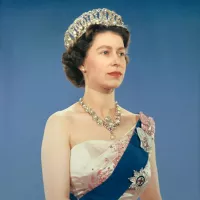
Elizabeth II reigned as Queen of the United Kingdom and...
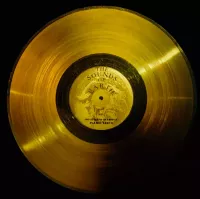
Music is a cultural universal involving the arrangement of sound...
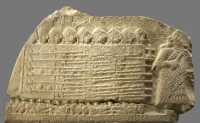
War is defined as an armed conflict involving the organized...
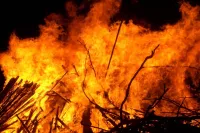
Fire is a rapid oxidation process called combustion releasing heat...
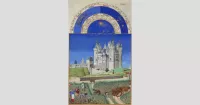
September is the ninth month of the year in the...
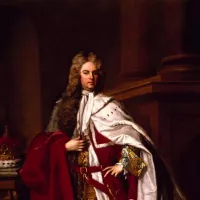
The title Duke denotes a male monarch ruling a duchy...
Trending
18 days ago Volaris Faces Pilot Dispute: ASPA Challenges Foreign Pilot Hiring Amid Route Revocation
20 days ago Delta faces schedule changes due to Oregon pipeline leak, Kotek declares emergency.

10 days ago A'ja Wilson discusses relationship with Bam Adebayo; Caitlin Clark's Salary Revealed

4 months ago Texas AG probes Xcel Energy over ESG, DEI links to 2024 wildfires.
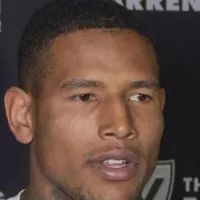
Darren Charles Waller is an American football tight end for the New York Giants He was drafted by the Baltimore...
9 months ago USF Alumni Invitational Track Meet: U-M and Syracuse Achieve Top Marks.
Popular

Candace Owens is an American conservative political commentator and author...

Ilhan Omar is an American politician currently serving as the...

XXXTentacion born Jahseh Dwayne Ricardo Onfroy was a controversial yet...

Frederick Christ Trump Sr - was an American real estate...

Oprah Winfrey an American talk show host television producer actress...
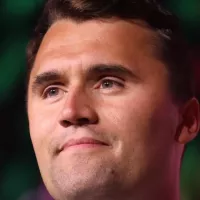
Charles James Charlie Kirk was a prominent American right-wing political...
